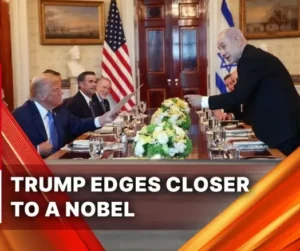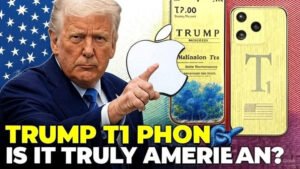US President Donald Trump has indicated that the cycle of tit-for-tat tariff hikes between the United States and China may soon come to an end, following weeks of escalating trade tensions that rattled global markets. Speaking at the White House, Trump acknowledged the economic risks of further tariff increases, stating, “I don’t want them to go higher because at a certain point you make it where people don’t buy”. This marks a shift from the administration’s earlier approach, which saw tariffs on Chinese imports climb as high as 245% in response to Beijing’s retaliatory measures and export restrictions on critical minerals.
The Market and Political Backdrop
Trump’s comments reflect a growing recognition of the limits of tariff escalation. The latest round of tariffs, which reached 245% on Chinese goods, followed China’s imposition of 125% tariffs on US products and new export bans on rare earth elements vital to high-tech and defense industries. These moves triggered significant market volatility and raised concerns among US businesses and consumers about rising costs and supply chain disruptions.
China, for its part, signaled it would not continue the “numbers game with tariffs,” suggesting a mutual desire to avoid further escalation. Despite ongoing communication, high-level negotiations that could lead to a comprehensive trade deal remain elusive, with both sides wary and cautious in their public statements.
TikTok Deal on Hold Amid Diplomatic Stalemate
The fate of TikTok’s US operations, owned by China-based ByteDance, has become entangled in the broader trade dispute. The Trump administration had repeatedly extended deadlines for ByteDance to divest TikTok’s US assets, citing national security concerns and a new law requiring foreign-owned apps to be sold or face a ban.
A proposed deal, which would transfer majority ownership to US investors and reduce ByteDance’s stake below 20%, has stalled due to Beijing’s refusal to approve the sale while tariffs remain in place
Trump confirmed that the TikTok deal is now on ice, stating, “We have a deal for TikTok, but it’ll be subject to China so we’ll just delay the deal ’til this thing works out one way or the other”.
He also hinted that a reduction in tariffs could be offered as an incentive to finalize the TikTok agreement, but emphasized that “every point in tariffs is worth more than TikTok,” underscoring the primacy of trade policy over individual business deals.
Perspectives from the US, China, and Industry
- US Administration: Trump’s shift signals a pragmatic approach, balancing the need to protect American industries with the risk of harming consumers and businesses through higher prices. The administration remains open to negotiations, but insists on maintaining leverage until a favorable deal is reached.
- China: Beijing’s stance is firm—no further tariff escalation, but also no concessions on strategic sectors or high-profile deals like TikTok while punitive tariffs remain. China’s export controls on rare earths are seen as a countermeasure to US pressure.
- Industry and Investors: US and global businesses have expressed relief at the prospect of de-escalation, but uncertainty remains high. The delay in the TikTok deal and ongoing trade unpredictability continue to disrupt investment plans and supply chains.
What Comes Next?
While both sides appear to be stepping back from the brink, the underlying issues—technology transfer, market access, and national security—remain unresolved. The TikTok saga exemplifies how individual business decisions are now inseparable from broader geopolitical dynamics. Any resolution will likely require concessions on both tariffs and technology policy, with the outcome shaping the future of US-China economic relations.







